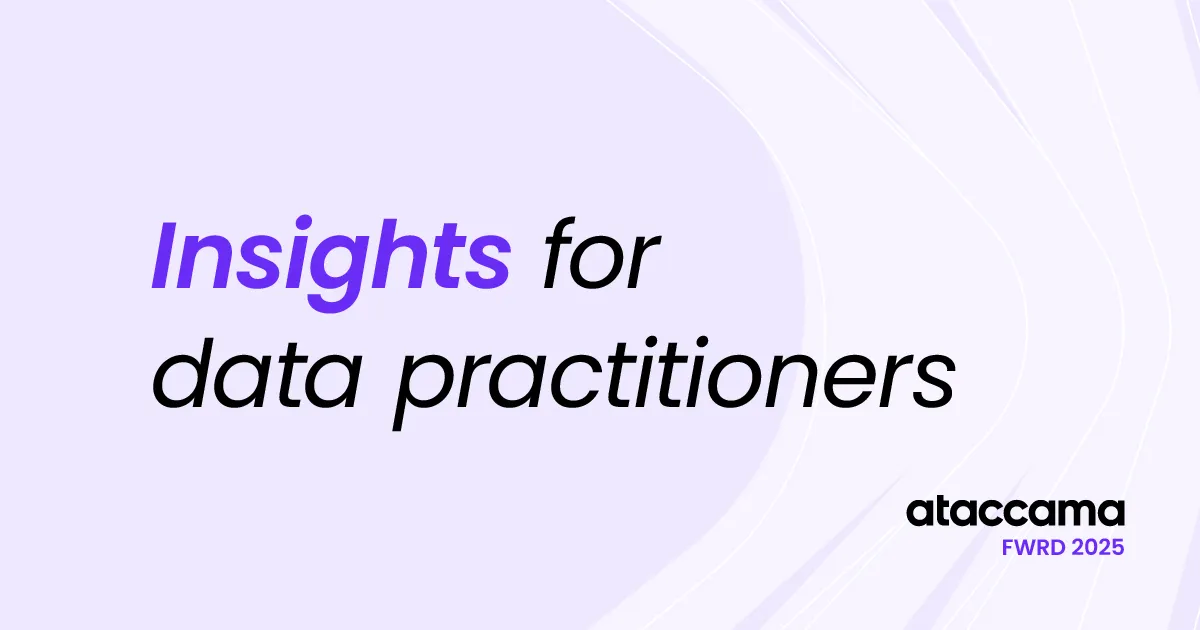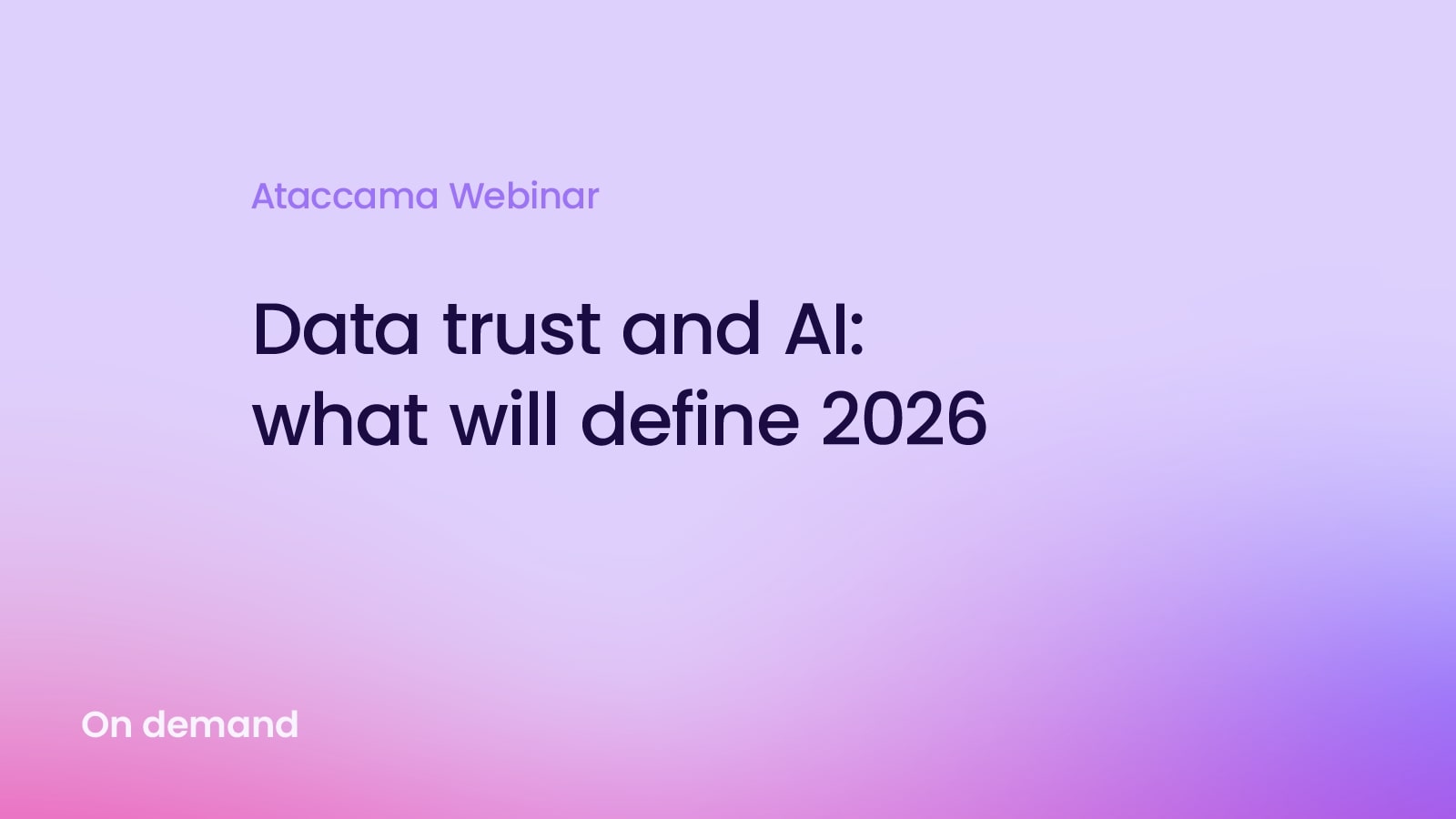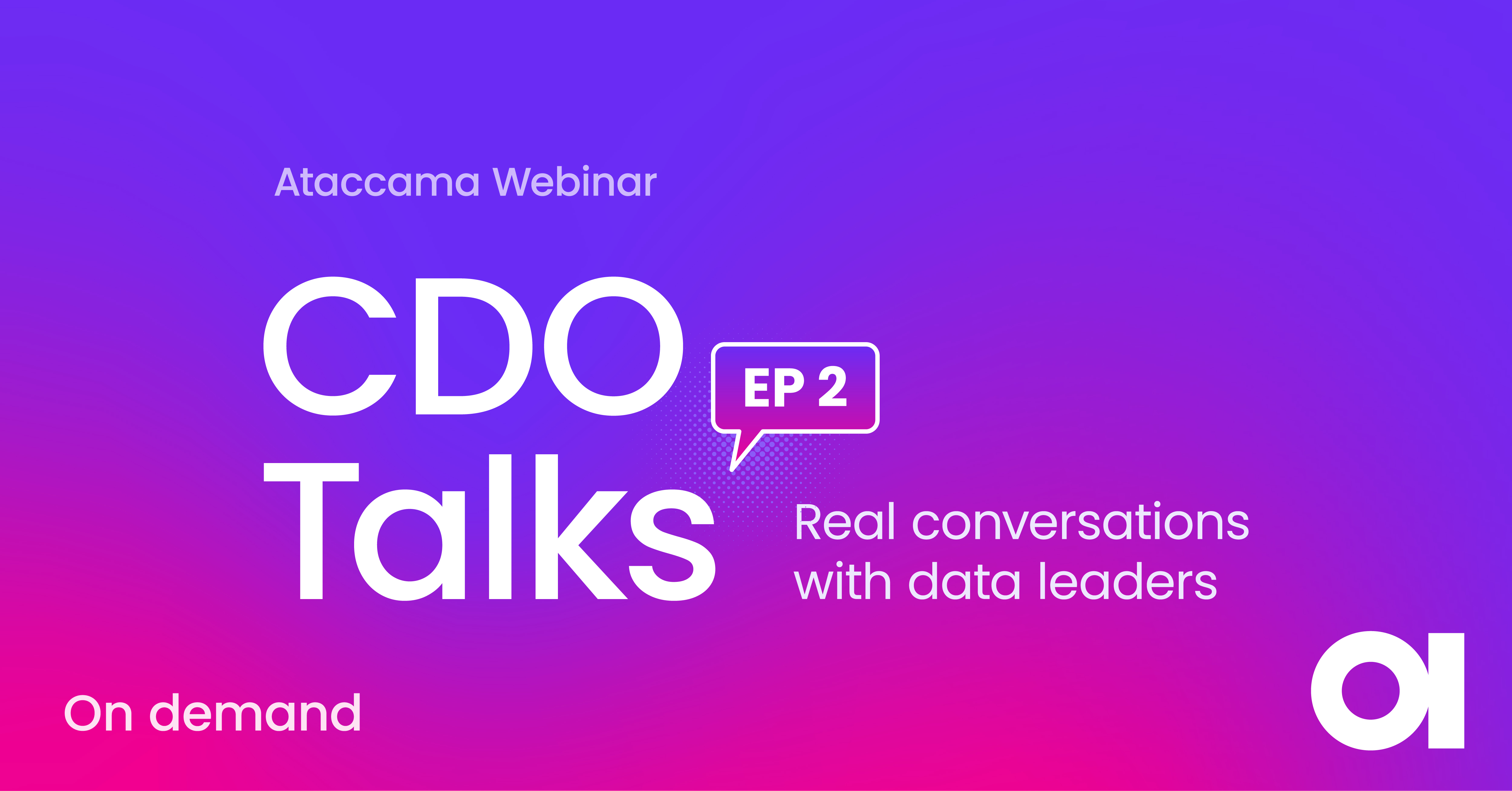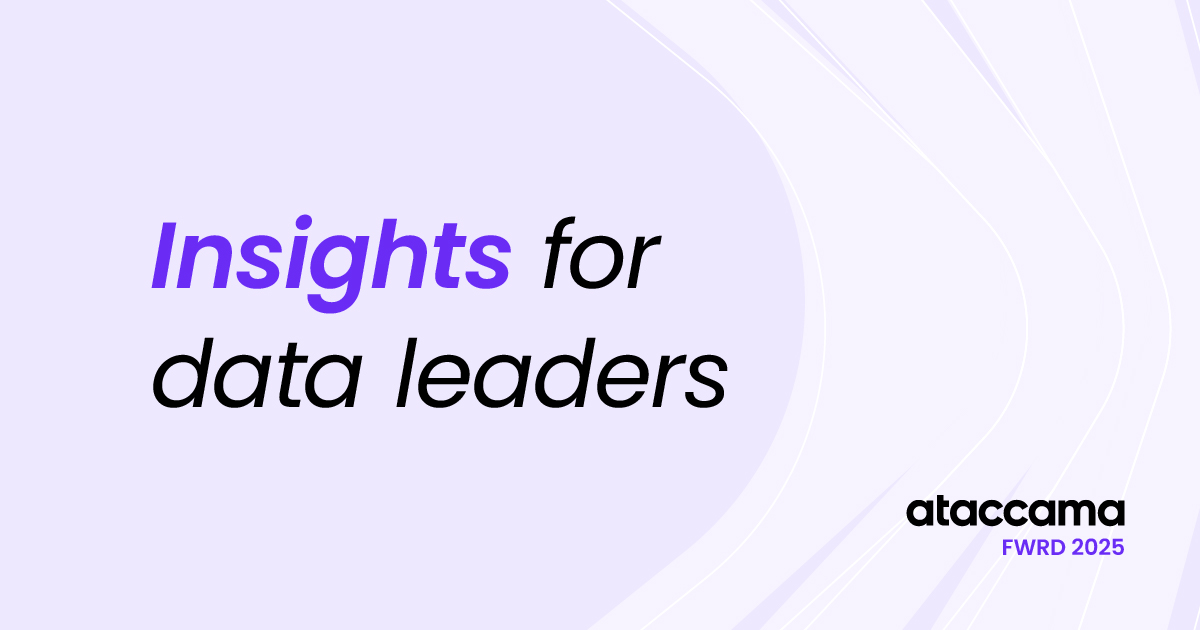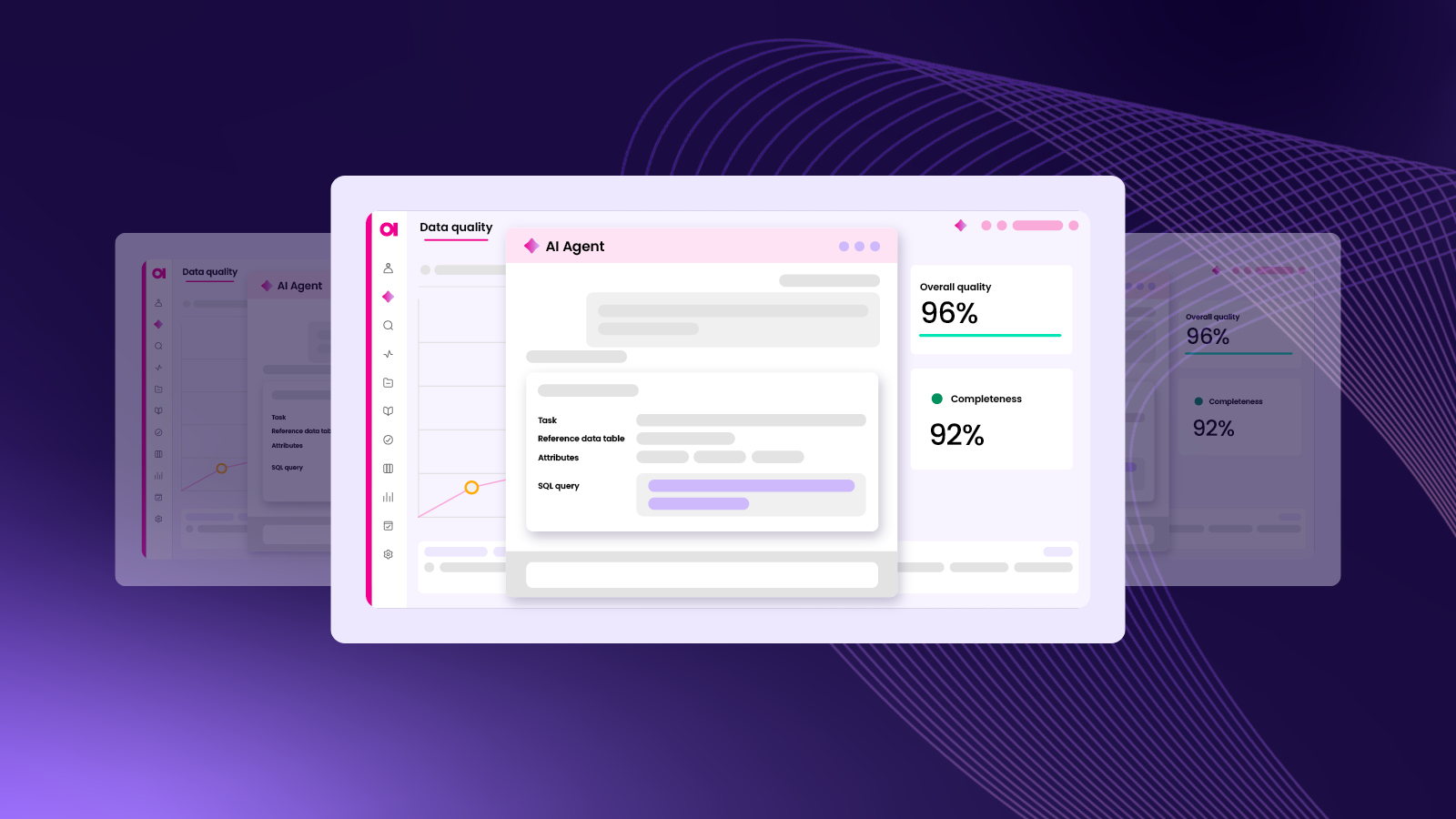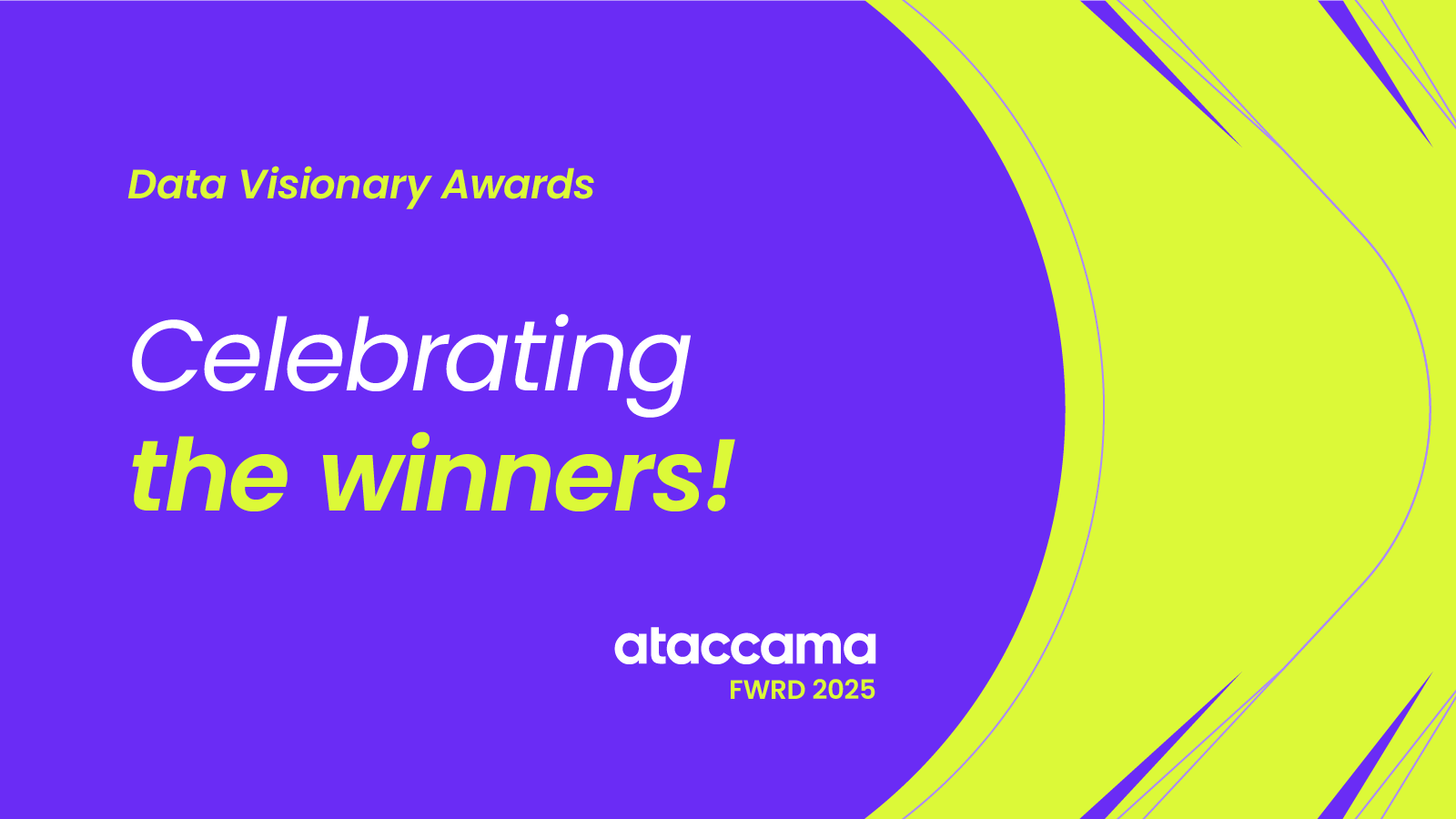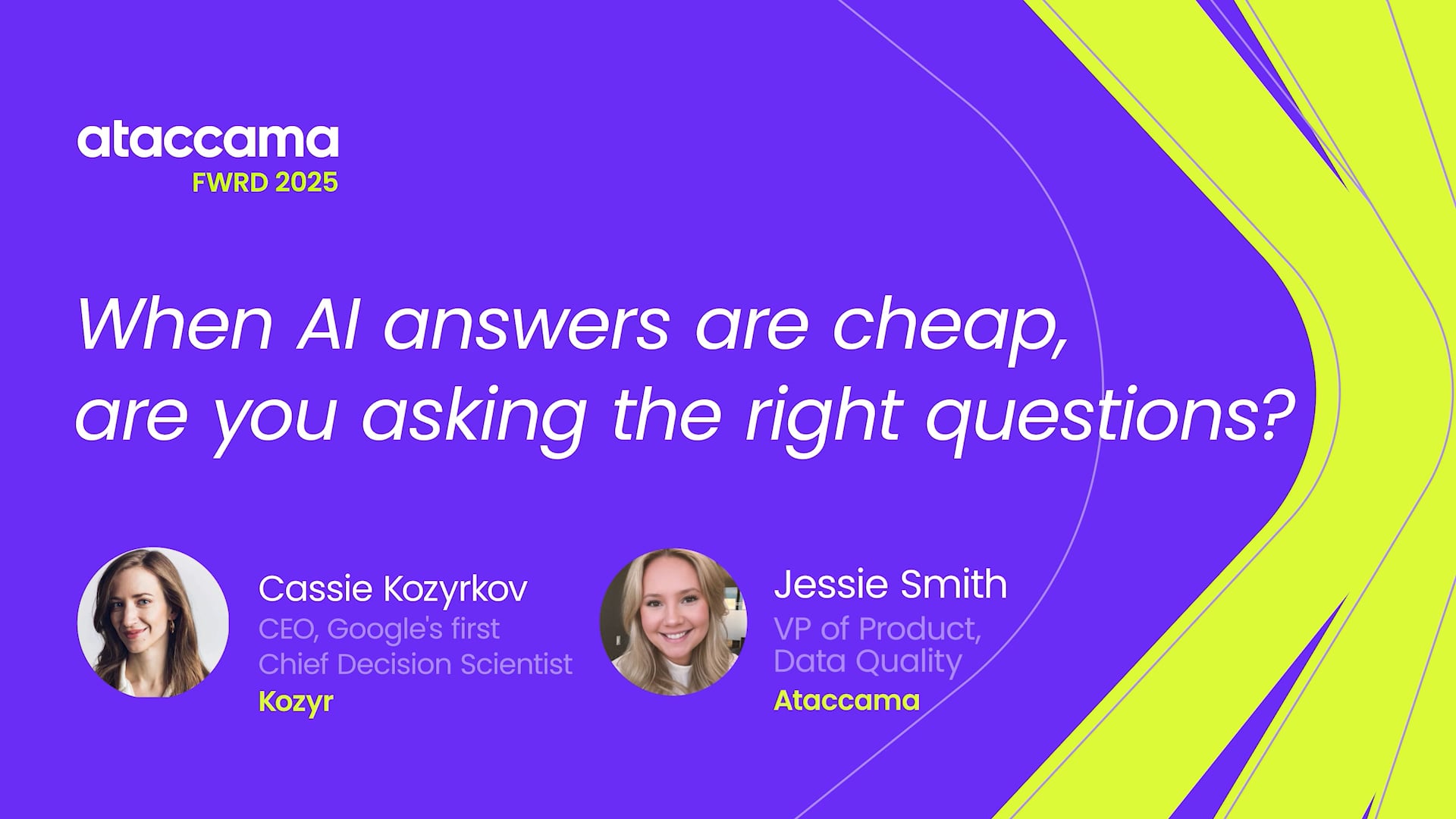What’s new in the 2025 Gartner® Magic Quadrant™ for Augmented Data Quality solutions?

Why this year’s quadrant is different
- AI maturity is now table stakes. Gartner re-weighted its scoring to favor platforms with AI-driven rule generation, anomaly detection, and automated stewardship—raising the bar for everyone.
- Unstructured data gets first-class status. Support for profiling and remediating text, images, audio, and other non-tabular assets became a core criterion as generative-AI use cases surge.
- Vendor shake-ups prove speed wins. Four incumbents dropped out while three newcomers arrived, illustrating that innovation—not legacy—now influences the position.
The release of the 2025 Gartner® Magic Quadrant™ for Augmented Data Quality solutions brings some big changes to the data management landscape. Gartner’s annual evaluation of data quality vendors is always highly anticipated, and a few key trends stand out this year. With a stronger emphasis on artificial intelligence (AI) and the growing need for unstructured data processing, the Magic Quadrant is evolving. It’s a sign that the future of data quality is all about innovation and adaptability.
In this blog, we’ll explore what’s new in the 2025 report, the key changes in vendor rankings, and how the latest shifts impact organizations looking to improve their data quality and governance strategies.
Key trends in the 2025 Magic Quadrant
Snapshot of the five key trends
| Trend | Gartner’s emphasis | What it means for data leaders |
|---|---|---|
| AI-powered data quality takes center stage | Larger weighting on AI-driven automation, rule creation, and stewardship | Prioritize platforms with deep AI, not checkbox features, to avoid future re-platforming. |
| Increased focus on unstructured data | Ability to ingest, profile, and remediate text, images, audio, etc. now scored explicitly | Ensure tools can handle non-tabular sources to fuel GenAI and broader analytics. |
| Vendors dropped and new players | Collibra and three others exit; Ab Initio, Anomalo, Irion debut—Ab Initio lands in Challenger quadrant | Market disruption rewards AI-first entrants; incumbents must accelerate roadmaps. |
| Vendor movements: from Leaders to Challengers | Qlik jumps to Leader; IBM and SAS slide as AI depth & unstructured coverage dominate ranking | Re-evaluate vendor strategy annually—positions can swing quickly with shifting criteria. |
| Not all vendors are ready for the future | Gartner flags laggards lacking automation and AI-centric design | Future-proof by choosing platforms with proven AI pipelines and rapid feature delivery. |
1. AI-powered data quality takes center stage
One of the most significant changes this year is the growing focus on AI capabilities. Gartner has made it clear—AI is the future of data governance. In the 2025 Magic Quadrant, AI is more important than ever, with many vendors stepping up their game by enhancing their AI features or adding new AI-driven tools to stay competitive. At Ataccama, we’re proud to be recognized for our innovative AI-powered features, especially our one AI engine. This technology plays a key role in reducing manual tasks, automating the creation of data quality rules, and ensuring data consistency.
While AI is clearly a game-changer in this space, Gartner also pointed out that not every vendor is fully tapping into its potential. Some well-established companies lack sufficient AI capabilities, which is a crucial gap as AI becomes central to the future of data management.
2. Increased focus on unstructured data
Another big change in this year’s evaluation is the added focus on unstructured data. With generative AI gaining traction and the need to train models with all kinds of data, being able to handle unstructured data has become a key factor for vendors in the data quality space. Processing large amounts of unstructured data—like text, audio, and images—has put extra pressure on vendors to keep innovating and expand their capabilities.
3. The big moves: vendors dropped and new players
This year’s Magic Quadrant brought some interesting shifts, with four vendors dropping out entirely. Most notably, Collibra. Gartner points to the struggles with integrating their owldq acquisition as a key factor. This change shows just how competitive the data quality market has become, with a bigger focus on innovation and AI.
On the flip side, three new vendors have made their debut in the Magic Quadrant: Ab Initio, Anomalo, and Irion. These newcomers have been recognized for their strong offerings, with Ab Initio making a big move as a “Challenger” and Anomalo quickly rising as a promising competitor. It’s clear the market is evolving, and there’s plenty of room for fresh ideas from new players.
4. Vendor movements: from Leaders to Challengers
Some well-known names saw big changes in their positions this year. Qlik made a huge leap into the “Leaders” quadrant, probably boosted by their acquisition of Kyndi, which helped strengthen their AI capabilities. On the other hand, IBM and SAS faced setbacks—IBM dropped from “Leaders” to “Challengers,” and SAS fell all the way to the “Niche Players” quadrant. These shifts highlight the growing importance of AI and the ability to handle unstructured data as major factors in the industry today.
5. Not all vendors are ready for the future
While AI is definitely the future of data quality, not all vendors have fully jumped on board yet. Gartner’s report points out a gap in AI-driven solutions, with some vendors lagging behind. Those not focusing on AI might struggle to keep up as the demand for automation and smarter data management grows.
At Ataccama, we’ve always been at the forefront of AI innovation. Our one AI platform offers advanced features, like AI-assisted rule creation, automated data profiling, and continuous data quality monitoring. These tools help organizations get the most out of their data and stay ahead of the curve.
How Ataccama is leading the charge in data quality
For the fourth year in a row, Ataccama has been named a Leader in the Gartner® Magic Quadrant™ for Augmented Data Quality solutions. This recognition highlights our ongoing dedication to delivering top-notch solutions that help organizations manage, govern, and trust their data. Our platform brings together all the key aspects of data management and governance—metadata management, master data management, data quality, and observability—into a single, AI-powered solution.
Ataccama one stands out as the most complete data quality solution, covering the entire data quality lifecycle. From documenting and defining assets to identifying and fixing data quality issues, our platform helps organizations improve data quality and create real business value.
On top of being recognized in the “Augmented Data Quality Magic Quadrant,” we’ve also earned a spot in the “Data and Analytics Governance Magic Quadrant” for 2025, solidifying our growing influence in the world of data governance and showing that we’re not just a Leader in data quality, but also a Rising Force in the broader data management space.
Frequently asked questions
What is the Gartner Magic Quadrant for augmented data quality?
The Gartner® Magic Quadrant™ is an independent market snapshot that ranks vendors on “ability to execute” and “completeness of vision.” The augmented data quality edition focuses on platforms that automate profiling, cleansing, monitoring, and stewardship with AI, giving buyers a quick view of strengths, cautions, and market momentum.
How does AI improve data quality processes?
AI accelerates rule discovery, auto-classifies anomalies, and recommends fixes in near real time. It slashes manual stewardship effort, scales to millions of data assets, and continually learns from feedback, ensuring data quality programs keep pace with changing schemas, sources, and business requirements.
Why did some vendors drop out of the 2025 quadrant?
Vendors that failed to embed production-ready AI, struggled with unstructured data, or showed slow feature velocity lost competitive ground. Gartner removed them to keep the quadrant focused on solutions that meet the evolving expectations of automation, scalability, and multicloud deployment.
What makes unstructured data harder to govern?
Unlike rows and columns, documents, images, and audio files lack consistent schemas. They need AI-driven pattern recognition to profile content, identify sensitive entities, and apply quality rules. Managing volume, variety, and metadata lineage for these assets adds complexity that legacy tools can’t handle.
How does Ataccama ONE AI support data observability?
Ataccama ONE AI continuously profiles data pipelines, flags anomalies as they emerge, and links quality metrics back to business-impact dashboards. Automated root-cause analysis speeds issue resolution, while unified metadata and governance ensure that fixes propagate across data lakes, warehouses, and real-time streams.
David Lazar
David is the Head of Digital Marketing at Ataccama, bringing eight years of experience in the data industry, including his time at Instarea, a data monetization company within the Adastra Group. He holds an MSc. from the University of Glasgow and is passionate about technology and helping businesses unlock the full potential of their data.
